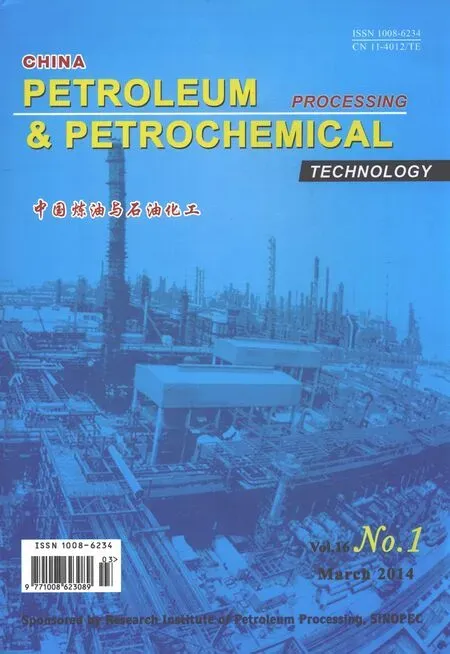The Project “Development and Application of FCC Additive for Maximization of Propylene and Isobutylene”Passed SINOPEC’s Appraisal
The Project “Development and Application of FCC Additive for Maximization of Propylene and Isobutylene”Passed SINOPEC’s Appraisal
The research project “Development and application of FCC additive for maximization of propylene and isobutylene” jointly undertaken by RIPP, the Baling Petrochemical Company (BPC) and the SINOPEC Catalyst Branch Company has on January 15, 2014 passed the technical appraisal sponsored by the Science and Technology Division of SINOPEC.
The technical personnel engaging in this project based on the research on the reaction chemistry for increasing the precursors of propylene and isobutylene has formed a technical idea on catalysts for maximizing propylene and iso-butylene. The ZSP-4 zeolite with the MFI structure featuring high utilization of active sites and the HSB-l zeolite with the REA structure characteristic of high isobutylene selectivity and high hydrothermal stability were developed, and the yield of propylene and isobutylene can be selectively boosted by adjusting the ratio of the above-mentioned two types of zeolites. In the meantime, a metallic aluminum phosphate matrix material that can enhance the n-butene isomerization ability has also been developed. The above-mentioned innovative technology has given rise to the additive FLOS capable of increasing the yields of propylene and isobutylene. The production of the additive FLOS features a rational production flow diagram that can maintain a stable product quality without causing any environmental problems.
The commercial test for application of these additives in the 1.05 Mt/a FCC (MIP-CGP) unit which runs on a mixed feedstock composed of mostly paraffinic atmospheric residuum at BPC has revealed that the unit has been operating smoothly with these additives. When the amount of the additive FLOS accounted for 6% of catalyst inventory, the LPG yield increased by 2.68 percentage points, among which the propylene yield experienced an 1.01% increase and the isobutylene yield—a 0.54% increase. Furthermore, the olefin content in gasoline was reduced coupled with an increase in octane rating of gasoline along with a definite reduction of diesel yield, resulting in a yearly incremental economic benefits amounting to 39.96 million RMB to the production enterprise.
- 中国炼油与石油化工的其它文章
- Catalytic Cracking of Cycloparaffins Admixed with Olefins: 1. Single-Event Microkinetic (SEMK) Modeling
- Synthesis of Environmentally Friendly Magnesium Linoleate Detergent
- Alkylation of o-Xylene with Styrene over Modified Mordenite for Environmentally Friendly Synthesis of PXE
- ZrOCl2·8H2O: An Efficient and Cheap Catalyst for Esterification of Free Fatty Acids to Methyl Esters
- Influence of Gas Density on Hydrodynamics in a Bubble Column
- Dispersion Performance of Methanol-Diesel Emulsified Fuel Prepared by High Gravity Technology

